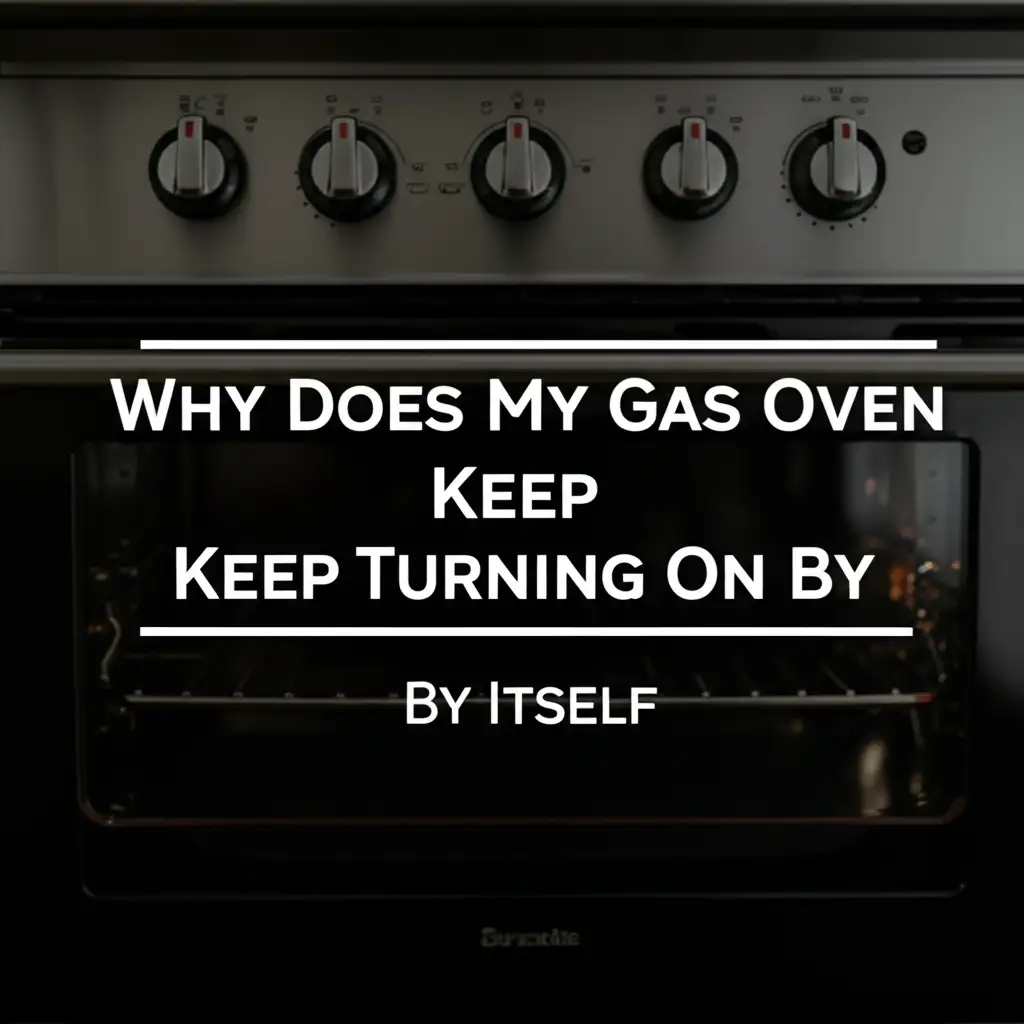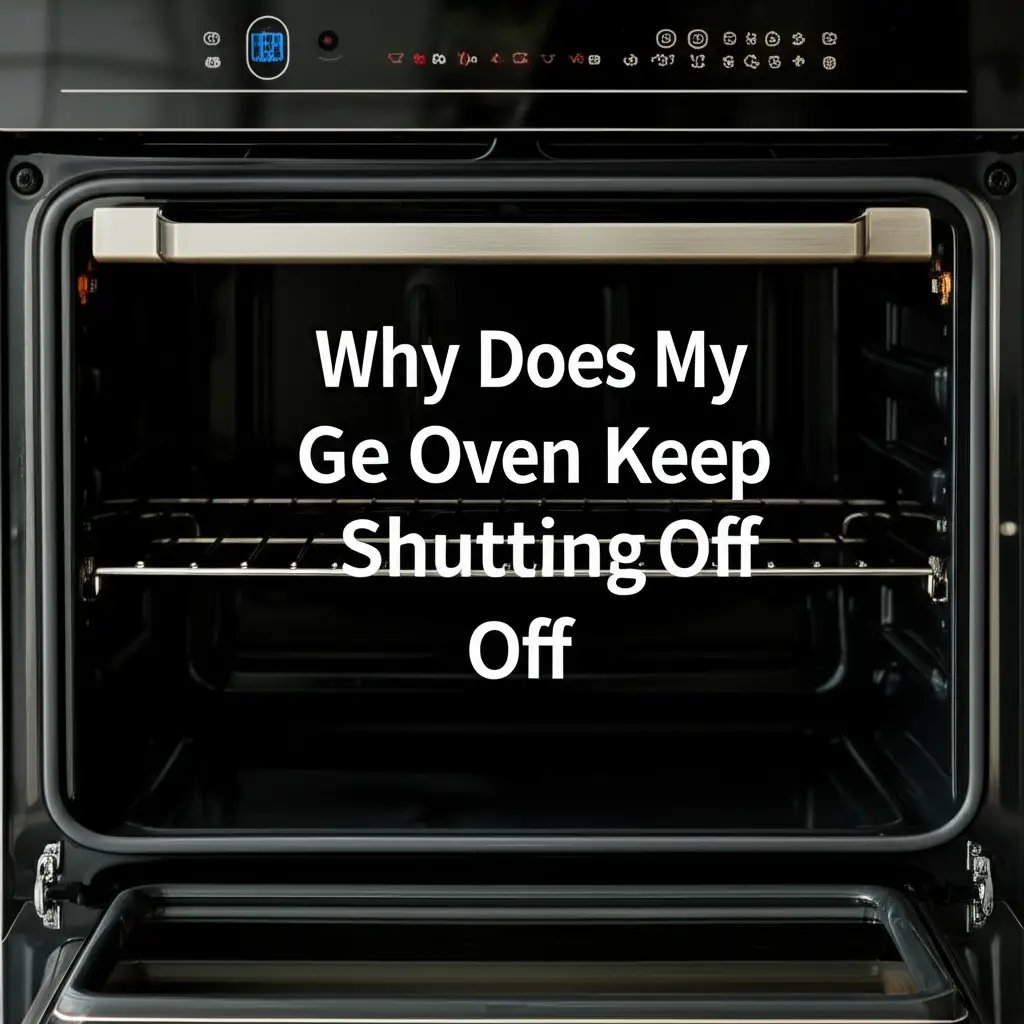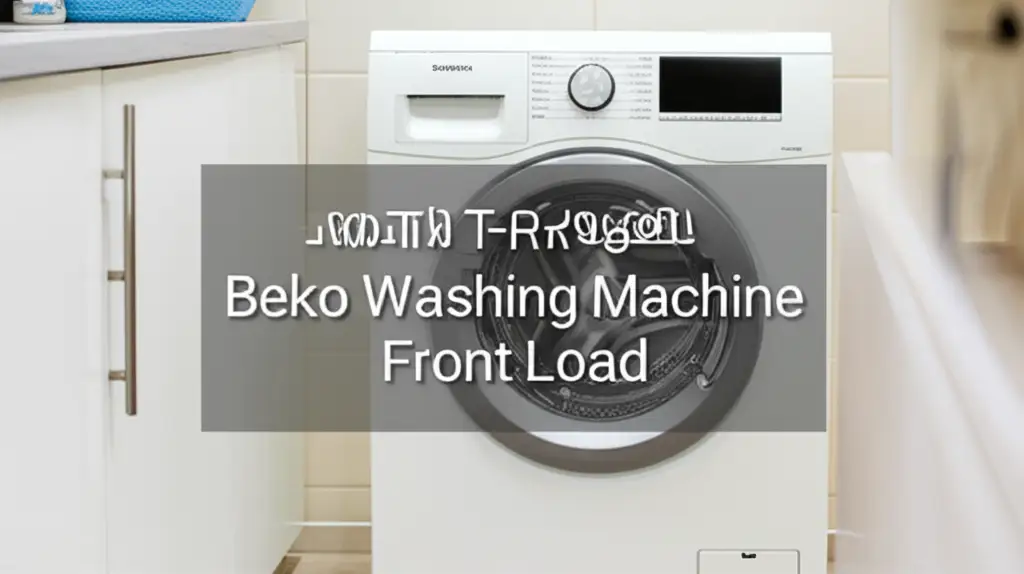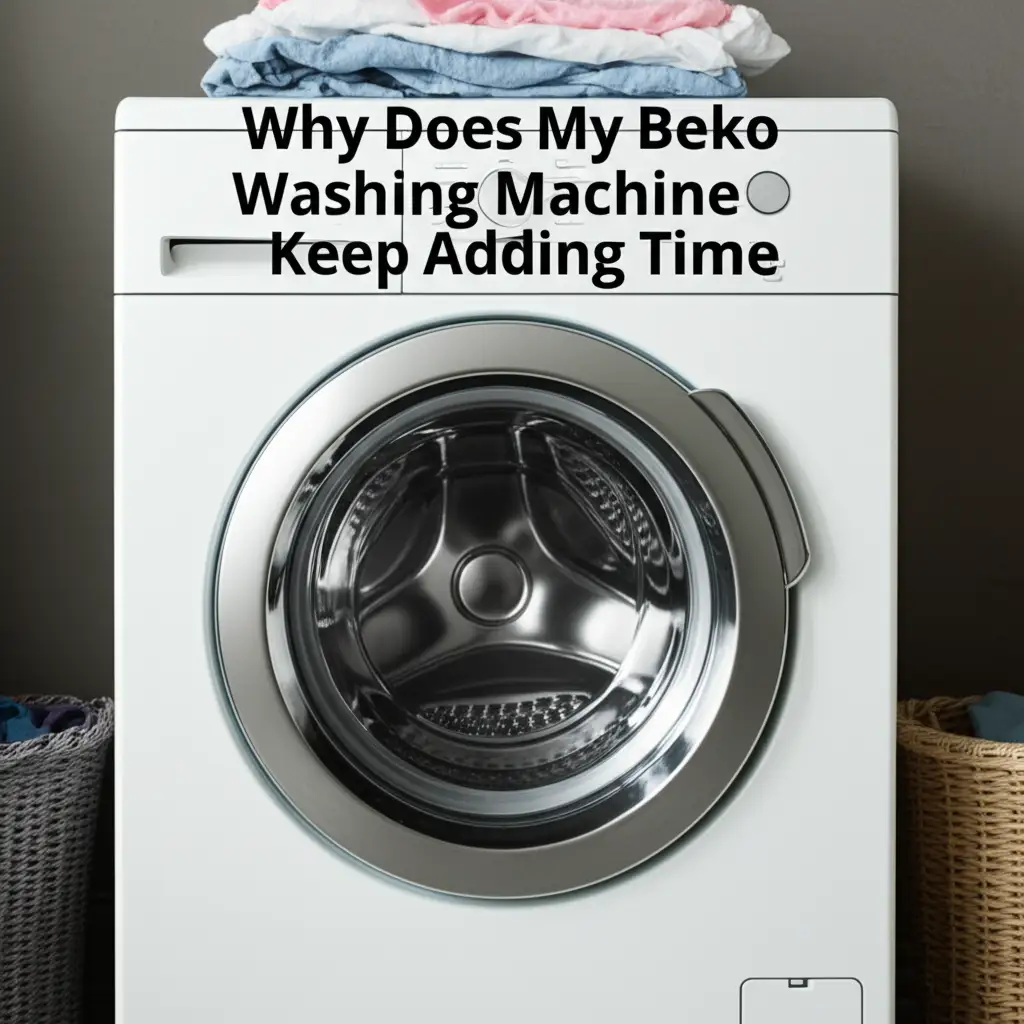· Katria Melrose · Home Appliances · 19 min read
Oven Is Too Hot Troubleshooting

Solving an Overheating Oven: Troubleshooting Your Appliance
Have you ever pulled a charred mess from your oven, even though you followed the recipe perfectly? It is frustrating when your oven is too hot, causing burnt edges and undercooked centers. An overheating oven ruins meals and wastes food. This common appliance issue can stem from various problems, from simple calibration needs to faulty parts. Understanding why your oven runs hot helps you fix the problem. You can avoid cooking mishaps and ensure your appliance works correctly.
This guide will help you understand common reasons an oven heats excessively. We will walk you through clear, simple troubleshooting steps. You will learn how to test your oven’s accuracy. We will cover potential fixes like calibration, temperature sensor replacement, and thermostat checks. By the end, you will have the knowledge to address an oven that is too hot. You can confidently return to baking and roasting delicious meals without worry.
Takeaway:
- Test your oven’s true temperature with an oven thermometer.
- Calibrate your oven settings if it runs consistently hot.
- Inspect and possibly replace the temperature sensor or thermostat.
- Ensure proper ventilation and check for internal wiring issues.
An oven that is too hot typically indicates a problem with its temperature regulation system. Common causes include a faulty temperature sensor, a miscalibrated thermostat, or issues with the heating element’s power supply. Addressing these components can resolve the overheating.
Why Your Oven Temperature Rises Too High
An oven should maintain a stable temperature. When your oven is too hot, it means something disrupts this balance. Several internal components work together to control heat. If one part fails, the entire system suffers. This often leads to inconsistent cooking results. You might notice foods cooking faster than expected or burning on the outside while remaining raw inside.
One common reason for an oven running hot is a failing temperature sensor. This small part reads the actual temperature inside the oven cavity. It sends this information to the control board. If the sensor sends incorrect readings, the control board might continue to supply power to the heating element, thinking the oven is still too cool. This causes the oven to overshoot the set temperature significantly. Over time, these sensors can degrade or become coated with debris, affecting their accuracy.
Another major culprit is a miscalibrated thermostat. The thermostat sets the desired temperature. It works with the temperature sensor to regulate the heat. If the thermostat is not calibrated correctly, it might tell the oven to heat more than necessary. Even if the sensor works, the thermostat’s internal settings could be off. This leads to persistent overheating. Some ovens allow for manual calibration, offering a simpler fix. For older models, the thermostat might simply wear out, losing its ability to regulate temperature precisely.
Finally, issues with the heating elements or their power supply can cause an oven to overheat. In electric ovens, if the element receives continuous power due to a stuck relay on the control board, it will keep heating. For gas ovens, a gas valve that does not close properly can lead to a continuous flame. This provides too much heat. These problems usually require professional repair due to safety concerns. Always disconnect power or gas before inspecting these parts. Understanding these possibilities is the first step in successful oven troubleshooting.
Checking Your Oven’s True Temperature
Before you dive into complex repairs, confirm your oven is actually too hot. What you feel might not be what the oven is. An external oven thermometer is essential for this step. Do not rely solely on the oven’s internal display. These displays can be inaccurate due to sensor errors or calibration issues. A simple, inexpensive oven thermometer provides an independent verification. This tool helps you see the true internal temperature.
To get an accurate reading, place the oven thermometer in the center of an empty oven. Set your oven to a common baking temperature, such as 350°F (175°C). Let the oven preheat fully. Then, allow it to cycle for at least 20-30 minutes. Ovens often overshoot their set temperature during the initial preheat phase. They then settle down as the thermostat cycles. Observing the temperature over time gives a better picture. Note the highest and lowest temperatures the thermometer displays during this period.
You might notice the thermometer reading fluctuates. This is normal. Ovens cycle on and off to maintain temperature. However, if the thermometer consistently reads 25-50 degrees higher than the set temperature, you have an overheating problem. Record these discrepancies. This data will be helpful when you try to calibrate your oven. It also assists a repair technician if you need professional help. Knowing the exact temperature deviation makes troubleshooting more efficient.
If your oven displays a large temperature swing, such as dropping far below the set point before kicking back up, this indicates regulation issues. A stable oven will stay within about 10-20 degrees of its set temperature. Wide swings or consistent high readings confirm your oven is too hot. This basic test saves you time and effort. It helps avoid unnecessary repairs.
Calibrating Your Oven for Accuracy
Once you confirm your oven runs hot with an external thermometer, the next step is often calibration. Many modern ovens allow users to adjust their internal temperature settings. This helps compensate for a consistently hot oven. Think of it as fine-tuning your appliance. Calibration does not fix a faulty part. It simply adjusts the readings to match the actual temperature. This can often resolve minor temperature deviations.
Refer to your oven’s user manual for specific calibration instructions. The process varies by brand and model. Generally, you will access a “calibration” or “offset” setting in the control panel menu. You might need to press a combination of buttons, like “Bake” and “Start,” or navigate through a digital display. Once in the calibration mode, you can adjust the temperature up or down. If your oven is consistently 25 degrees too hot, you would set the offset to -25 degrees. This tells the oven to bake 25 degrees cooler than its displayed setting.
Make small adjustments, typically in 5 or 10-degree increments. After each adjustment, re-test your oven with the external thermometer. Allow the oven to preheat and stabilize for at least 20-30 minutes. This ensures the change has taken effect. Patience is key during this step. You might need to repeat the calibration and testing process a few times to achieve the desired accuracy. The goal is to get your external thermometer to match the oven’s display as closely as possible.
Not all ovens have a user-accessible calibration feature. Older models, or some basic models, might lack this option. If your oven cannot be calibrated, or if the calibration does not resolve the overheating, you need to consider other causes. Calibration is a convenient first fix for an oven that is too hot. However, it is a band-aid solution if a component is truly failing. Ensure your oven interior is clean before calibration, as residue can sometimes affect performance. For tips on maintaining a clean oven, you might find articles on how to deep clean your oven helpful.
Inspecting and Replacing the Temperature Sensor
The temperature sensor is a critical component in your oven’s heating system. It acts as the “eyes” of the control board. This sensor measures the exact temperature inside the oven cavity. It sends electrical resistance readings back to the oven’s electronic control. If the sensor itself is faulty, it will send incorrect resistance values. The control board then gets wrong information. This causes the oven to overheat or underheat. A common issue is a sensor that reads lower than the actual temperature. This makes the control board think the oven needs more heat.
To inspect the temperature sensor, first ensure your oven is completely unplugged or the circuit breaker is off. Safety is paramount when working with appliances. The temperature sensor is typically located inside the oven cavity, usually on the back wall or ceiling. It looks like a thin metal probe, often with two wires connected to it. Carefully pull the sensor out of its mounting hole. Sometimes, a screw holds it in place. Inspect the sensor for any visible damage, such as cracks, corrosion, or burnt spots. These are signs of a faulty sensor.
You can test the temperature sensor’s resistance using a multimeter. This requires knowledge of specific resistance values for your oven’s sensor at different temperatures. You can usually find these values in your oven’s service manual. A typical sensor at room temperature (around 70°F or 21°C) might have a resistance of 1090 ohms. If your sensor reads significantly different, it is likely defective. Most people will find it easier to simply replace the sensor if they suspect it is bad. They are relatively inexpensive and easy to replace for many oven models.
Replacing the sensor involves disconnecting the wires and connecting the new sensor. Make sure the new sensor is compatible with your oven’s make and model. Push the new sensor back into its mounting hole and secure it. Reconnect the power and re-test your oven with an external thermometer. A new, properly functioning temperature sensor should resolve most overheating issues caused by inaccurate readings. If you have an electric oven, maintaining a clean heating element can also contribute to consistent performance. Learn more about how to clean oven heating element for better results.
Troubleshooting the Oven Thermostat
While the temperature sensor reads the actual heat, the oven thermostat is the brain that controls it. It receives information from the sensor and then tells the heating elements when to turn on and off. If the thermostat is faulty, it might not properly process the sensor’s readings. It could also have internal components that stick or fail, leading to continuous heating. This results in an oven that is too hot, no matter what temperature you set.
Identifying a faulty thermostat is trickier than testing a sensor. Often, the thermostat is integrated into the main control board on modern electronic ovens. For older, mechanical ovens, it is a standalone unit with a capillary tube running into the oven cavity. If your oven consistently overshoots the target temperature by a large margin (more than 50 degrees) and calibration does not work, the thermostat is a prime suspect. Intermittent overheating or uneven heating can also point to thermostat issues.
Accessing the thermostat usually means removing the oven’s back panel or the control panel. Again, always disconnect power before starting. For electronic control boards, you are looking for damaged relays or circuits. This often requires professional expertise. For mechanical thermostats, you might see a bulb and capillary tube that is bent, kinked, or broken. This tube contains a gas or liquid that expands and contracts with temperature changes, regulating the heat. Damage to this tube will make the thermostat inaccurate.
Replacing a thermostat or control board is a more involved repair than a simple sensor swap. It often requires specific parts for your model and careful wiring. If you are not comfortable with electrical work, it is best to call a qualified appliance technician. A professional can diagnose the exact issue with the thermostat or control board. They can ensure safe and correct replacement. Investing in proper repair ensures your oven functions safely and efficiently for years to come. Remember, keeping your oven clean, especially the interior parts, can help prolong its life and ensure proper function. You can find useful tips on how to clean inside oven for routine maintenance.
Checking Heating Elements and Relays
In an oven that is too hot, the problem might not be with the parts that measure or control temperature, but with the parts that generate it. For electric ovens, this means the heating elements. For gas ovens, it refers to the igniter and gas valve. Relays on the control board play a significant role here. They are switches that send power to the elements. If a relay gets stuck in the “on” position, it will continuously power the heating element. This makes the element generate heat even when it should be off.
For electric ovens, visually inspect both the bake and broil elements. Look for any visible damage, such as breaks, blisters, or signs of arcing. Even if an element appears fine, a faulty one could still be drawing too much power or remaining partially active. Use a multimeter to check the continuity of the elements. A broken element will show no continuity. However, a “stuck on” issue is more likely due to a control board relay. If you suspect a relay, you would need to examine the main control board. This requires caution and often professional help.
In gas ovens, continuous heat beyond the set temperature often points to a problem with the gas valve or igniter. The igniter usually heats up to ignite the gas. It also acts as a safety sensor. If it senses enough heat, it tells the gas valve to stay open. If the igniter is faulty, it might signal insufficient heat even when the oven is hot. This keeps the gas valve open, allowing gas to flow and burn continuously. A stuck gas valve also leads to continuous heat. These issues are very serious. Gas leaks are dangerous.
Safety First:
- Always shut off the gas supply and disconnect power before inspecting gas oven components.
- Do not attempt to fix gas components if you are not trained.
- Call a certified appliance technician for gas oven issues.
Dealing with heating elements, gas valves, and control board relays involves high voltage or gas lines. Incorrect handling can lead to electric shock, fire, or gas leaks. If you are not experienced with these types of repairs, it is always safest to consult a qualified appliance repair professional. They have the tools and expertise to diagnose and fix these issues safely and correctly. Regular cleaning of your oven, including specific parts like oven coils, can help prevent some general wear and tear issues that might lead to future problems. You can learn about how to clean oven coils to keep them in good shape.
Examining the Oven Door Seal and Venting
An oven that is too hot can sometimes be a symptom of inefficient heat retention or improper airflow, rather than a faulty component that over-produces heat. The oven door seal plays a crucial role in maintaining consistent temperatures. This gasket, usually made of rubber or silicone, creates a tight barrier around the oven door. It keeps the heat inside. If the seal is worn, cracked, or loose, heat will escape from the oven cavity. This might seem counterintuitive for an “oven too hot” problem. However, if heat escapes, the oven’s control system might overcompensate. It continuously applies more heat to reach or maintain the set temperature, leading to an overall higher internal average.
To check your oven door seal, perform a simple paper test. Close the oven door on a piece of paper. If the paper slides out easily, the seal is likely compromised. Repeat this test around the entire perimeter of the door. A good seal should grip the paper firmly. Inspect the gasket visually for any tears, hardening, or sagging. Replacing a faulty oven door seal is a straightforward DIY task. You can often find replacement seals specifically for your oven model online or at appliance parts stores. A proper seal ensures heat stays where it belongs, preventing the oven from overworking to compensate.
Venting is another important aspect of oven performance. Ovens have vents to release excess heat and moisture. These vents prevent pressure buildup and ensure proper airflow. If the oven vents are blocked, heat and moisture can get trapped. This might lead to higher-than-expected temperatures. Check for any obstructions around the vent openings, which are typically located at the back or top of the oven. Cookware, foil, or even accumulated grease can block these openings. Ensuring clear ventilation helps the oven breathe.
While less common, extreme external heat or poor kitchen ventilation can also indirectly affect oven temperature. If the kitchen itself is excessively hot, or if the oven is installed in a confined space without adequate air circulation, it might struggle to dissipate heat efficiently. This can contribute to the oven running warmer than intended. Regular cleaning of the oven’s exterior and ensuring clear surrounding areas can assist with proper airflow. Cleaning the general area of your kitchen is always a good practice, and understanding how to effectively clean your oven hood can improve overall kitchen ventilation and help with heat management.
When to Call a Professional Appliance Technician
While many oven troubleshooting steps are manageable for a DIY enthusiast, some situations demand professional help. Knowing when to call a technician saves you time, prevents further damage, and ensures your safety. If you have tried the basic troubleshooting steps—like using an external thermometer, calibrating your oven, and inspecting the temperature sensor—and your oven is still too hot, it is time to consider professional assistance. Persistent overheating often indicates a deeper, more complex issue than a simple fix.
Complex electrical problems are a major reason to call a professional. Issues with the oven’s main control board or relays require specific diagnostic tools and expertise. These components manage the power flow to the heating elements. A fault in these parts can lead to continuous heating, which is a fire hazard. Troubleshooting these components yourself can be dangerous. Technicians are trained to safely diagnose and repair these intricate electrical systems. They have access to specific schematics and parts that are not readily available to the public.
Gas oven problems, particularly those involving the gas valve or igniter, should always be handled by a certified gas appliance technician. Gas leaks are extremely dangerous and can lead to explosions or carbon monoxide poisoning. Never attempt to repair gas lines or internal gas components yourself unless you are a qualified professional. A technician ensures that all gas connections are secure and that the gas flow is correctly regulated. They can safely replace faulty gas valves or igniters.
If your oven is still under warranty, calling a professional is often the best choice. Attempting DIY repairs on a warranted appliance can void the warranty. This means you would pay for any subsequent repairs yourself. A certified technician can complete the repair while keeping your warranty intact. Additionally, if you feel uncomfortable or unsure at any point during the troubleshooting process, do not hesitate to seek help. Your safety and the proper functioning of your appliance are most important. Regular maintenance, such as understanding how to clean an electric oven or a gas oven effectively, can sometimes prevent complex issues from developing, but when they do, a professional is key.
FAQ Section
Q1: Can dirty oven components make it run too hot? A1: Yes, in some indirect ways. Accumulated grease and food debris on heating elements or around sensors can act as insulation, potentially leading to inaccurate readings or inefficient heat distribution. While direct overheating is rare, a dirty oven can cause hot spots or make the oven work harder, which might contribute to temperature inconsistencies. Regular cleaning helps maintain optimal performance.
Q2: How accurate should my oven be? A2: Most ovens are designed to maintain a temperature within +/- 25 degrees Fahrenheit (about 14 degrees Celsius) of the set temperature. Professional-grade ovens might offer tighter accuracy. If your external oven thermometer shows consistent deviations larger than this range, especially on the high side, your oven likely needs troubleshooting or calibration.
Q3: Is it safe to use an oven that is too hot? A3: Using an oven that consistently runs too hot is generally not safe. Overheating can char food, create excess smoke, and potentially lead to grease fires inside the oven. Furthermore, consistently high temperatures can prematurely wear out components, posing a risk of more serious malfunctions. It is best to address the issue before continuing to use the oven.
Q4: Can a power surge affect oven temperature? A4: Yes, a power surge can damage the electronic control board or temperature sensor in a modern oven. This damage can lead to incorrect temperature readings or improper power regulation to the heating elements, causing the oven to run too hot. If overheating started after a power event, it is a possible cause.
Q5: How often should I check my oven’s temperature? A5: It is a good practice to check your oven’s temperature with an external thermometer at least once a year, or if you notice any changes in baking or cooking results. This proactive approach helps catch minor temperature drifts before they become major problems, ensuring your food cooks correctly.
Q6: Does self-cleaning affect oven temperature? A6: After a self-cleaning cycle, some ovens might experience minor temperature fluctuations temporarily. This is usually due to the extreme heat during the cycle stressing components. If your oven starts running significantly hot after a self-clean cycle, it could indicate that the self-clean process damaged a temperature-regulating component like the sensor or control board.
Conclusion
Discovering your oven is too hot can be frustrating, leading to burnt dinners and wasted ingredients. However, as we have explored, many common causes for an overheating oven are fixable. By systematically troubleshooting, you can often identify and resolve the issue yourself. We started by stressing the importance of confirming the problem with an external oven thermometer. This simple step provides the data you need. We then covered oven calibration, a common fix for minor temperature drifts. We also looked into inspecting and replacing the critical temperature sensor, a frequent culprit behind inaccurate heating.
Beyond these common fixes, we discussed the role of the oven thermostat and the complexities of checking heating elements and control board relays. Issues with these parts often require more advanced knowledge or professional intervention. Remember to always prioritize safety. Disconnect power or gas when working on your appliance. Finally, we highlighted the importance of a proper oven door seal and clear ventilation. These often-overlooked factors contribute to stable oven temperatures.
Taking the time to understand and address why your oven is too hot will improve your cooking results. It also extends the lifespan of your appliance. If you have gone through these steps and your oven still gives you trouble, do not hesitate to call a certified appliance technician. They possess the expertise and tools to handle more complex repairs safely. Take control of your kitchen again and ensure every meal comes out perfectly baked, roasted, or broiled. Enjoy consistently perfect results from your oven!





